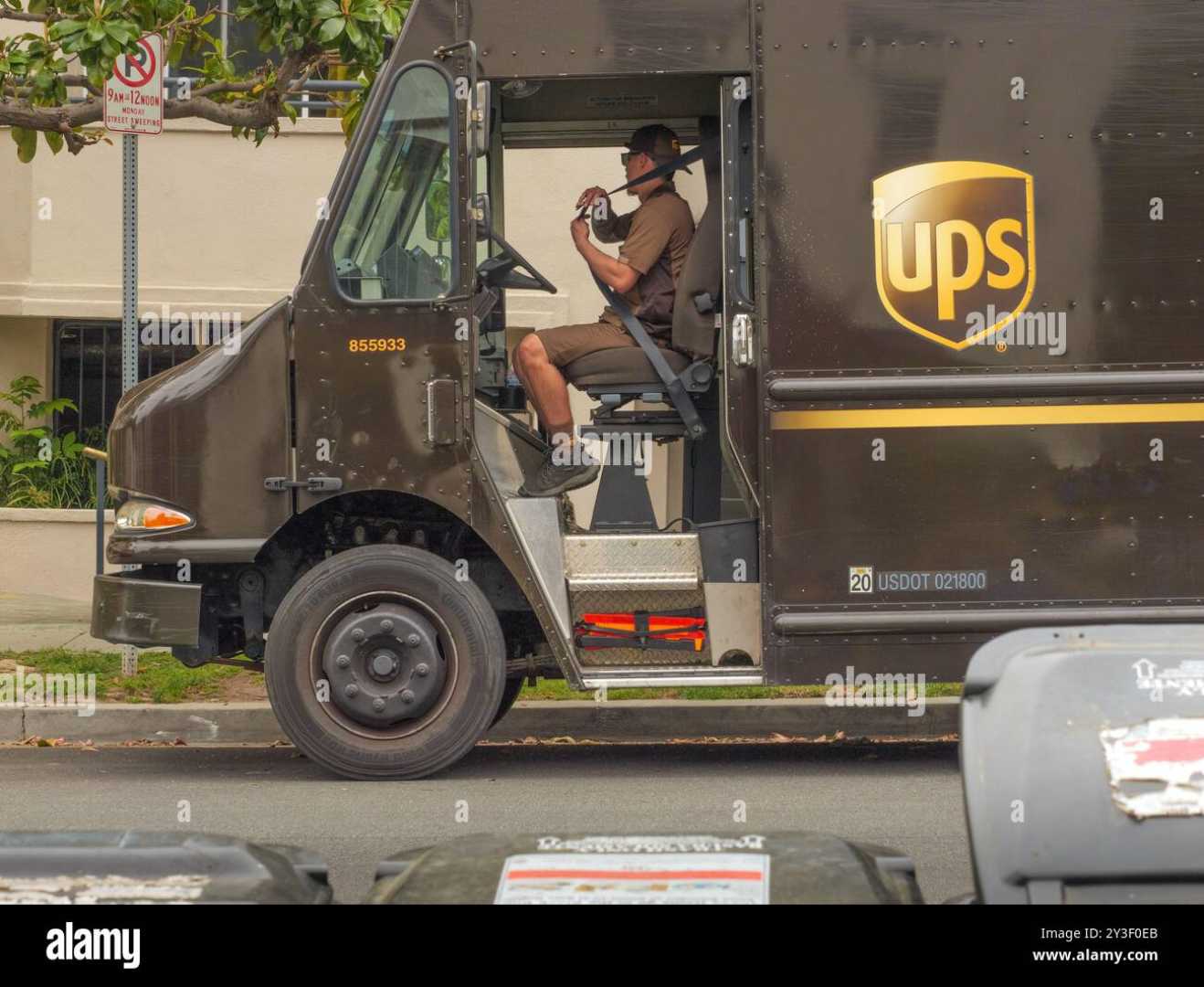Business
UPS Faces Uncertain Future Ahead of Q1 Earnings Report

ATLANTA, Ga. — United Parcel Service (UPS) is set to release its first-quarter earnings report on April 26, 2025, amidst growing concerns of negative financial outcomes. The logistics giant’s market capitalization stands at $83 billion, with shares trading at $97.62, a decrease of 2.50% on April 4, 2025.
UPS has struggled to meet its full-year guidance for the past three years, raising questions about its current forecast for 2025. The company has typically refrained from providing specific earnings per share projections, opting instead to focus on revenue and adjusted operating profit margins, which analysts use to infer financial performance.
“It’s important to recognize that UPS has consistently missed its revenue and profit expectations, underscoring a troubling trend for investors,” said financial analyst Sarah Johnson. In the last three fiscal years, UPS has fallen short of its revenue targets, with initial guidance of $102 billion in 2022, $97 to $99.4 billion in 2023, and $92 to $94.5 billion in 2024, against actual revenues that were lower than expectations.
The latest guidance for 2025 predicts revenue of $89 billion, with adjusted operating profit margins expected to be around 10.8%. However, analysts anticipate that UPS could again fail to meet these projections, especially considering recent industry trends indicating weakening demand within the U.S. economy.
This trend has been echoed by major industrial companies like 3M, which cited reduced first-quarter revenue projections due to order deferrals primarily influenced by a contracting economic climate. Compounding these challenges, UPS faces increased competition and shifting demand dynamics in business-to-business deliveries, a sector critical to its profitability.
Analysts are raising red flags about UPS’s capacity to maintain its dividend, which currently yields nearly 6%. Pressure from declining delivery volumes and reduced business-driven activities threaten the company’s financial health, innovative strategies, and its ability to drive long-term growth.
“If demand continues to contract, this could lead us to consider alternatives like a dividend cut—a move that might serve as a reset for expectations,” said Brandon Oglenski, an analyst at Barclays. The company’s guidance indicates free cash flow of $5.7 billion, compared to total planned dividend payouts of $5.5 billion, raising questions about sustainability.
In light of these challenges, UPS has embarked on a plan to cut the volume of Amazon deliveries it manages, aiming for a 50% reduction by 2026. This decision reflects a strategic shift toward higher-margin deliveries from sectors like healthcare and small-medium enterprises.
Despite the daunting landscape, some analysts still view UPS as a compelling long-term investment. The company is investing in technology to enhance operational productivity, including automation, which may buffer it against ongoing economic pressures.
“Long-term investors should consider UPS, but proceed with caution,” suggested industry expert Mark Green. “Their strategic pivot could redefine their market presence, despite present vulnerabilities.”
As UPS prepares for this earnings report, all eyes will be on its financial performance and the implications for investors and the market at large.












